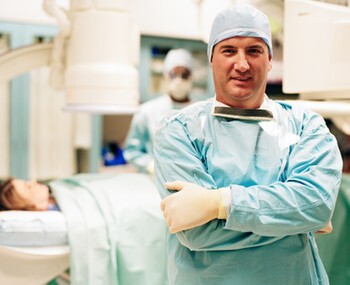Radiation therapy treats cancer using high-energy x-ray beams. The beams target cancer cells from outside the body and destroy fast-growing cells, such as cancer cells.
Key points to remember
- radiation therapy treats cancer using high-energy x-ray beams
- the beams target cancer cells from outside the body and destroy fast-growing cells, such as cancer cells
- radiation can damage both healthy cells and cancer cells, but the healthy cells are better at healing themselves
- your child will need to lie still while having radiation treatment
What is radiation therapy?
Radiation therapy treats cancer using high-energy x-ray beams.
The beams target cancer cells from outside the body and destroy fast-growing cells, such as cancer cells. Your child may have radiation by itself or with other therapies, such as chemotherapy and surgery.
Radiation can damage both healthy cells and cancer cells, but the healthy cells are better at healing themselves. Unlike chemotherapy, radiation does not cause cell damage throughout the body. Radiation only damages cells in the part of the body receiving radiation.
There are 2 types of radiation therapy - external and internal. Only a very small number of children will have internal radiation therapy.
External beam radiation
External beam radiation is the most common method for children with cancer. A machine (most often a linear accelerator) delivers high energy beams to a specific part of the body.
There is a linear accelerator at each of New Zealand's 2 child cancer treatment centres. Sometimes, your child or young person may be able to have radiotherapy at a radiation oncology centre closer to your home.
Who are the specialists who will deliver radiotherapy to my child?
If your child needs radiation therapy, you will meet with a specialist called a radiation oncologist.
The radiation oncologist will explain the best method of radiation for your child, along with the risks and benefits.
The radiation oncologist will calculate the radiation volume and dosage for your child. A radiation therapist works out the time it will take for the linear accelerator to give the exact dose. They also operate the accelerator machine.
Simulation session
Your child will have a simulation session before they start their radiation treatment.
In a simulation session, your child's healthcare team will decide on the exact area of your child's body that will receive radiation. This is called the radiation field.
Sometimes, a doctor or nurse will draw marks are on your child's body. Your child should not wash these off until the end of radiation treatment. In most cases, a doctor or nurse will use tiny permanent ink dots (tattoos) to mark the area receiving radiation. Your child's radiation oncology team will explain the type of markings that they will use for your child.
Staying still is important
Your child will need to lie still while having radiation treatment. Many young children can do this successfully after receiving coaching and preparation from their treatment team. If your child is very young or unable to lie still, a doctor or nurse may give them medicine (sedation or general anaesthesia) so that they sleep while they have radiation treatment.
What are the side effects?
Radiation can cause your child's skin to become sensitive in the part of their body receiving treatment. You can clean your child's skin with mild soap and water. Ask your healthcare team which creams or powders you should use on your child’s skin to help protect against the radiation effects.
Radiation is a very effective treatment for cancer but it can damage some healthy cells close to the part of the body receiving treatment. This can cause short-term and long-term side effects. The side effects will depend on the amount of radiation your child has, and the part of the body receiving treatment.
Not all children will have all of the possible side effects. Your radiation oncologist and healthcare team will make sure your child has a check-up to identify and manage any side effects from radiotherapy.
Click Donate to fund the ongoing development of the Circulating Tumor DNA project which will improve outcomes for those children already diagnosed with cancer.
Disclaimer - Content on this blog is for educational use only. Please consult your doctor or other health professional to make sure the information is right for your child.
Copyright - Please note that the information on this blog is copyright owned by The Paediatric Society of New Zealand and Starship Foundation. See copyright information at the Kids Health website.
